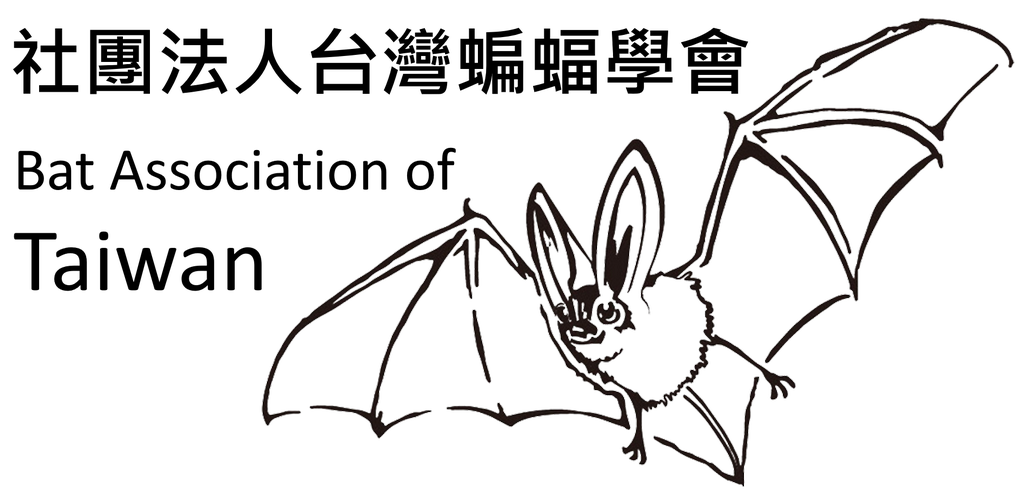蝙蝠研究
2015_台灣蝙蝠族群中冠狀病毒的基因體學研究_阮芳雲
出版年份:2015
研究生:阮芳雲
分類:碩士論文
題目:台灣蝙蝠族群中冠狀病毒的基因體學研究
Title:Genomic Characterization of Coronavirus in the Bat Population Resided in Taiwan
摘要:
冠狀病毒能導致人類及多種動物產生各種疾病,特別是爆發於2003年的嚴重急性呼吸道症候群(SARS)及在2012年於中東地區發生的中東呼吸道症候群(MERS)。蝙蝠已被證實是SARS和MERS冠狀病毒的自然宿主。本研究在 2013年至2014年期間收集來自20種蝙蝠,共254個糞便樣本以調查台灣蝙蝠族群內冠狀病毒的分佈狀況。利用聚合酶連鎖反應偵測蝙蝠冠狀病毒的RNA-dependent RNA polymerase (RdRp)基因中保守的440鹼基對。結果從8種蝙蝠種類中發現有58個糞便樣本呈現陽性反應。高頭蝠(Scotophilus kuhlii)有最高的冠狀病毒檢出率(45.1%),其次是30%的台灣小蹄鼻蝠(Rhinophilus monoceros)。大多數的蝙蝠種類中,雌性蝙蝠糞便有較高的檢出率(29.5%)高於雄性蝙蝠(16.7%),除了高頭蝠。在成年蝙蝠中的冠狀病毒檢出率(24.8%)高於年輕蝙蝠(7%)。蝙蝠冠狀病毒也可在地面上的蝙蝠糞便中檢測到(17.2%)。由24條 RdRp序列構建出的演化樹顯示只有從台灣小蹄鼻蝠分離的BtCoV-CYCU-R9-TW-2013病毒株屬於乙型(Beta)冠狀病毒類型,跟SARS冠狀病毒(SARS-CoV-Tor2)具有96.8 %的胺基酸序列相似度,也與類SARS冠狀病毒(人類冠狀病毒HKU3和蝙蝠冠狀病毒Rp3)有關。其他23蝙蝠冠狀病毒分離株屬於甲型(Alpha) 冠狀病毒類型並可分成2個不同的譜系。第一個譜系包含20個來自高頭蝠(S)、東亞摺翅蝠(Miniopterus fuliginosus,M)、彩蝠(Kerivoula titania ,K)及台灣小蹄鼻蝠(R)的病毒分離株,屬於與中國海南島分離的Scotophilus BtCoV-512相關譜系,其胺基酸序列相似度介於89.6 到 98.4%之間。第二個為BtCoV-1A相關譜系,包含從東亞摺翅蝠及寬吻鼠耳蝠(Myotis latirostris,ML)分離的病毒株,其相似度達99%。這是首次研究顯示蝙蝠冠狀病毒在台灣蝙蝠族群中有極高的病毒檢出率,對公共衛生上針對冠狀病毒傳播的防範是非常重要的資訊。
Abstract:
Coronaviruses (CoVs) can cause various diseases in human and many animal species, especially the outbreaks of severe acute respiratory syndrome (SARS)-CoV in 2003 and Middle East respiratory syndrome (MERS)-CoV in 2012. Bats have been proved to be the natural reservoir of both SARS and MERS-CoV. To study the distribution of CoVs in the bats of Taiwan, total 254 fecal samples from 20 bat species in Taiwan were collected during year 2013 to 2014. The presence of bat CoV (BtCoV) was detected by PCR targeting the conserved 440 base-pairs fragment of RNA-dependent RNA polymerase (RdRp) gene among CoVs. Total 58 fecal samples were tested positive from 8 bat species. Chestnut bat (Scotophilus kuhlii) had the highest CoV prevalence (45.1%), followed by 30% from Formosan lesser horseshoe bat (Rhinophilus monoceros). Feces of female bats had higher detection rate (29.5%) than those of male bats (16.7%) in most bat species except Scotophilus kuhlii. More adult bats had BtCoV (24.8%) than young bats (7%). BtCoV can also be detected in feces on the ground (17.2%). Phylogenetic tree was constructed by 24 RdRp sequences of BtCoV with sufficient quality. Only BtCoV-CYCU-R9-TW-2013 from Rhinolophilus monoceros belonged to the genus Betacoronavirus and shared 96.8% of amino acid identities to human severe acute respiratory syndrome CoV (SARS-CoV-Tor2), Human CoV-HKU3 and Bat SARS-related CoV-Rp3. Other 23 BtCoVs belonged to the genus Alphacoronavirus and can be divided temporarily into 2 distinct lineages. The first lineage contained 20 BtCoV sequences from Scotophilus kuhlii (S), Miniopterus fuliginosus (M), Rhinolophus monoceros (R) and Kerivoula titania (K) and close to Scotophilus BtCoV-512-China-2005 (89.6 – 98.4% identities) for naming as BtCoV-512-related lineage. The second lineage can be named as BtCoV-1A-related lineage because it contains M4, M8, and ML1 from Miniopterus fuliginosus and Myotis latirostris respectively, closed to Miniopterus BtCoV-1A-China-2008 (99% identities). This is the first study showing the high prevalence of CoVs in the bat population in Taiwan.
